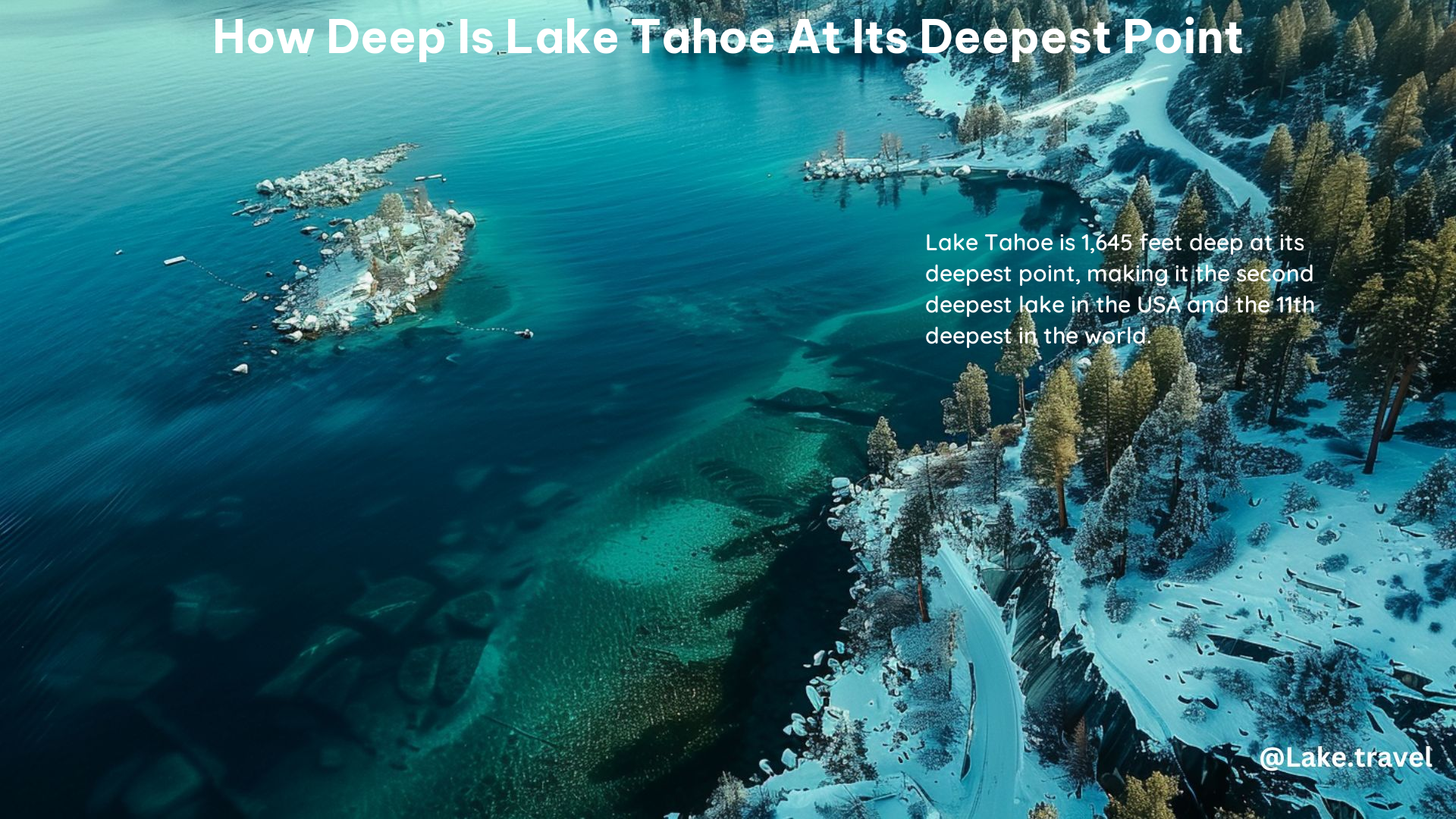Lake Tahoe is a stunning natural wonder located in the Sierra Nevada mountains, straddling the border between California and Nevada. As a popular destination for outdoor enthusiasts, one of the most common questions asked about this magnificent lake is: “How deep is Lake Tahoe at its deepest point?”
The Deepest Point of Lake Tahoe
According to the latest measurements, the deepest point of Lake Tahoe is an impressive 1,645 feet (501 meters). This makes Lake Tahoe the second-deepest lake in the United States, surpassed only by Crater Lake in Oregon, which reaches a maximum depth of 1,949 feet (594 meters).
Factors Contributing to the Depth of Lake Tahoe

The exceptional depth of Lake Tahoe is the result of a combination of geological and climatic factors that have shaped the lake over thousands of years. Here are some of the key factors that contribute to the impressive depth of this alpine lake:
Tectonic Activity
Lake Tahoe is situated in a region of active tectonic movement, with the Sierra Nevada mountain range and the Basin and Range province converging. This ongoing tectonic activity has created a deep, steep-sided basin that forms the lake’s basin.
Glacial Erosion
During the last ice age, glaciers carved deep valleys and basins in the Sierra Nevada mountains, including the basin that now holds Lake Tahoe. The powerful glacial erosion over thousands of years played a significant role in creating the lake’s impressive depth.
Volcanic Activity
The Lake Tahoe basin was also influenced by volcanic activity in the region, with lava flows and volcanic eruptions contributing to the shaping of the lake’s basin and depth.
Climatic Conditions
The high-altitude location of Lake Tahoe, with an average elevation of 6,225 feet (1,897 meters), also plays a role in its depth. The region’s cold, snowy climate and the presence of the surrounding mountains have helped to preserve the lake’s depth over time.
Exploring the Depths of Lake Tahoe
The remarkable depth of Lake Tahoe has captured the imagination of many visitors and researchers alike. Here are some interesting facts about the exploration and study of the lake’s depths:
Bathymetric Mapping
Extensive bathymetric mapping, using sonar and other advanced technologies, has been conducted to accurately measure the depth and contours of Lake Tahoe’s basin. These detailed maps have provided valuable insights into the lake’s geological history and formation.
Underwater Exploration
While the lake’s depth poses challenges for underwater exploration, some researchers and divers have ventured into the depths to study the lake’s ecosystem and geology. Remotely operated vehicles (ROVs) and submersibles have been used to explore the lake’s deepest regions, revealing fascinating insights about the lake’s unique environment.
Scientific Research
Lake Tahoe has been the subject of extensive scientific research, with scientists studying the lake’s water quality, ecosystem, and geological history. This research has helped to shed light on the factors that contribute to the lake’s exceptional depth and its overall environmental health.
Recreational Activities and Depth Considerations
The depth of Lake Tahoe is not only a fascinating geological feature but also an important consideration for various recreational activities on the lake. Here are some ways in which the lake’s depth impacts its use:
Boating and Water Sports
The deep waters of Lake Tahoe provide ample opportunities for boating, water skiing, and other water-based activities. However, the depth also requires boaters to be mindful of safety considerations, such as the potential for sudden changes in water depth and the need for proper safety equipment.
Fishing
Lake Tahoe is a popular destination for anglers, with a diverse array of fish species inhabiting the lake’s depths. The depth of the lake can influence the distribution and behavior of these fish, requiring anglers to adapt their techniques and strategies accordingly.
Scuba Diving
While the depth of Lake Tahoe presents challenges for scuba diving, the lake’s clear waters and unique underwater features have attracted a dedicated community of divers. Proper training, equipment, and safety precautions are essential for exploring the lake’s depths.
Conclusion
Lake Tahoe’s remarkable depth of 1,645 feet (501 meters) is a testament to the powerful geological forces that have shaped this stunning alpine lake over thousands of years. From its tectonic origins to the erosive power of glaciers and the influence of volcanic activity, the depth of Lake Tahoe is a fascinating and awe-inspiring feature that continues to captivate visitors and researchers alike.
Whether you’re a boater, angler, or scuba diver, the depth of Lake Tahoe is an important consideration that requires respect and caution. But for those who venture to explore the lake’s depths, the rewards are truly remarkable – a glimpse into the geological history and natural wonders that make Lake Tahoe one of the most unique and captivating bodies of water in the world.
